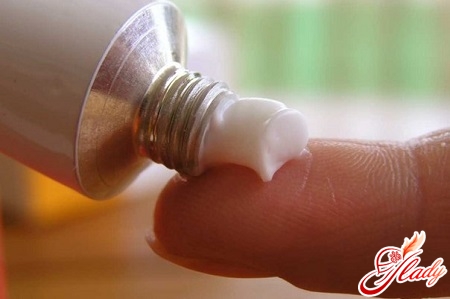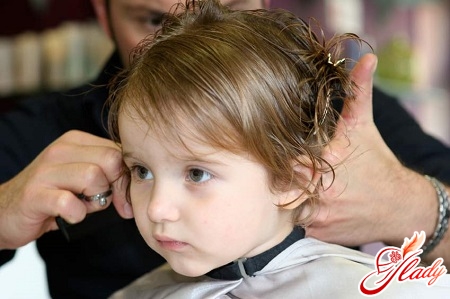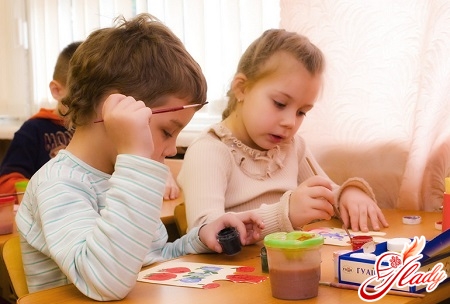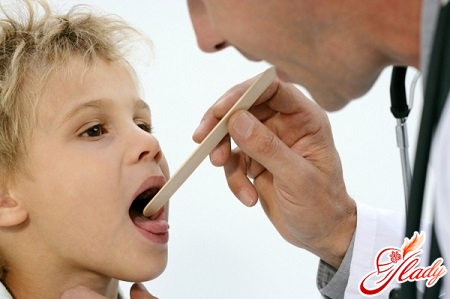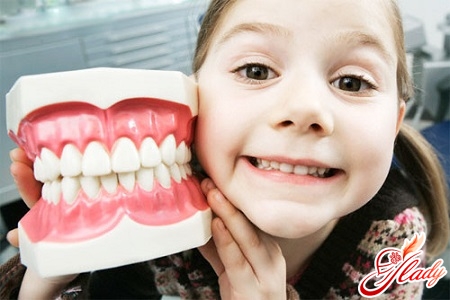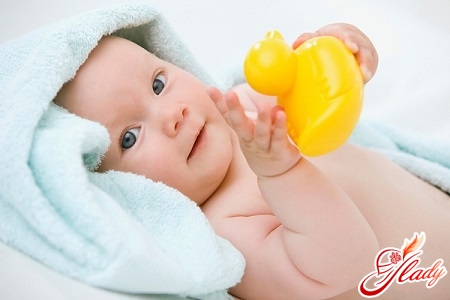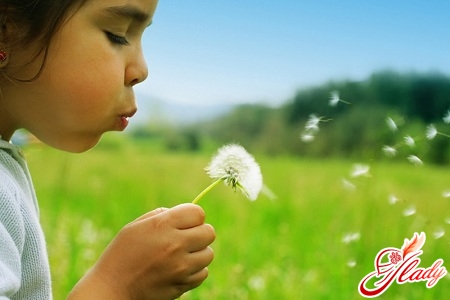 Today, one of the mostOne of the most common problems is allergies in children, the symptoms of which can be observed to varying degrees in every fourth child. Of course, in no case should the problem be ignored. And, frankly speaking, it is hardly possible - the symptoms are usually very pronounced, the child's condition suffers quite a lot. Of course, parents cannot cope with this disease on their own, you should not even try - you will only miss precious time. But the later the treatment is started, the more difficult it will be to suppress the allergy. In order to see a doctor in time, parents should know all the possible symptoms of allergies in children. But let's take everything in order, because there are several types of allergies, each of which has its own symptoms.
Today, one of the mostOne of the most common problems is allergies in children, the symptoms of which can be observed to varying degrees in every fourth child. Of course, in no case should the problem be ignored. And, frankly speaking, it is hardly possible - the symptoms are usually very pronounced, the child's condition suffers quite a lot. Of course, parents cannot cope with this disease on their own, you should not even try - you will only miss precious time. But the later the treatment is started, the more difficult it will be to suppress the allergy. In order to see a doctor in time, parents should know all the possible symptoms of allergies in children. But let's take everything in order, because there are several types of allergies, each of which has its own symptoms.
Allergic pollinosis
The most common todayAllergy in children is pollinosis. Doctors use this term to describe an allergic reaction in children that develops in response to pollen entering the child's body. Doctors have noticed one pattern: this type of allergy is most common in children born during the period of active plant flowering. In addition, genetic predisposition plays a decisive role: if at least one parent suffers from an allergic reaction to pollen, the likelihood of pollinosis in the child increases threefold. The following symptoms are characteristic of allergic pollinosis:
- Conjunctivitis
Tearing, redness of the eyes, itching and burning –the first symptoms that should make parents wary. After all, even if the culprit is not an allergy, but a bacterial infection, a visit to an ophthalmologist is a must!
- Runny nose
The child may complain of severe itching in the nose,there is strong watery discharge, deterioration of the sense of smell. At night, the nose usually gets blocked. Please note - nasal discharge with allergic rhinitis is always watery, transparent! Otherwise, most likely, the child has caught a cold.
- Sneezing
In most cases, during allergic hay fever, the child begins to sneeze. The sneezing is paroxysmal and is very annoying for the child.
- Headache, tinnitus
In particularly severe cases, the child may complainheadache, tinnitus. Especially if the baby's nose is stuffy. Treatment for hay fever should be prescribed by an allergist and strictly monitored. But a lot also depends on the parents. First, strictly follow all doctor's orders, monitor the regularity of taking medications. Second, monitor the sick child's diet. Below we will tell you about those products that are strictly contraindicated for all children suffering from various allergic reactions. In addition, parents should change the schedule of the child's stay in the fresh air. The highest pollen content in the air is observed from 6 to 10 am, and also from 6 to 10 pm. At this time, try not to let the child outside and do not open the windows. And the rest of the day, the windows should be covered with a thick damp gauze cloth.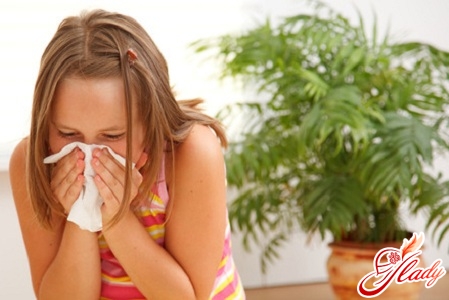
Food allergy
Another very common type of allergy isThis is a food allergy. Moreover, if hay fever rarely makes itself known in the first years of life, then food allergies often torment the baby from the first days of birth. The symptoms of food allergies are quite pronounced:
- Redness of the skin and rash
Depending on the degree of severityallergic reaction and individual characteristics of the child's body, the skin may simply turn red, or a skin rash may appear. The area of the skin lesion can also be very different. Most often, rashes are observed on the child's face, elbows, knees, stomach and back.
- Skin peeling
In addition to rashes, the child's skin is allergicreactions becomes very dry and begins to peel. Most often, this is observed on the cheeks, elbows and knees of the baby. Most often, children under three years of age suffer from this type of dermatitis.
- Itching of the skin
In almost all cases, the rash is veryitches a lot, causing great discomfort to the child. The itching intensifies in the evening and at night. The most important task is to find out what product the child has developed an allergic reaction to. If we are talking about a baby who is not yet receiving complementary foods, but is bottle-fed, this task is not difficult - the allergy arose from the mixture that the child receives. But if the baby is breastfed, or receives complementary foods, or is already old enough and eats with the family, the parents will have to work hard to find out the source of the problem. To do this, you need to keep a food diary - carefully write down all the foods that the nursing mother or the child eats. If this method does not help, there are two possible scenarios:
- Breastfeeding
If the baby eats mother's milk, the woman shouldfollow a strict hypoallergenic diet. After the allergy symptoms disappear, the woman should begin to introduce new foods into her diet - no more than once every three days. And carefully observe the baby's body reaction. As a rule, in most cases, this is how the allergen can be identified. The same is done if a food allergy bothers a child under five years of age.
- Allergic tests
If the child is already five years old, the best option would be allergy tests. We will tell you how they are carried out a little below.
Other types of allergies
Unfortunately, hay fever and food allergies are far from the only allergic reactions that children may experience. Allergists identify a number of allergens:
- Library and house dust
- Various means of household chemicals: washing powders, cleaning and washing materials
- Animal wool, feathers, feathers
And this is far from a complete list of allergens.A child's body is very unpredictable. For example, doctors know of cases of severe allergic reactions to synthetic fabrics, strong odors, sun, frost, and even water. Moreover, the symptoms of such allergic reactions can be much more serious than simple skin rashes. Doctors should seek medical help as soon as possible if a child has the following symptoms:
- Strong barking cough
- The wheezing in the lungs, no matter how intense
- The child's husky voice
- Loss of consciousness
All these manifestations may indicatedevelopment of pulmonary edema, which poses a serious threat to the child's life. Therefore, immediately put the child to bed, open all the windows and call an ambulance. If you have antihistamines in the house, give the medicine to the child before the doctors arrive. Please note - this can only be done if the child is conscious. Otherwise, he may choke.
Diagnosis of allergies
So what should parents do?suspected that your child has an allergy? Of course, see a doctor. The very first thing the doctor will do is determine the allergens that the child's body reacts to. There are two ways to do this:
- Skin allergens
This method is the most popular amongallergists from all over the world. However, they can only be carried out if the child is already five years old. Otherwise, it will not be possible to obtain reliable results. And the child's body does not need any extra stress. To carry out these tests, shallow scratches are made on the inside of the forearm. An aqueous solution with various allergens is applied to these scratches. After some time, doctors evaluate the results. Those scratches that have turned red and swollen indicate an allergen to which the child's body is sensitive. It is possible to apply 10 allergens at a time. Doctors have been using this method for more than 10 years, but recently scientists have increasingly begun to talk about its low efficiency - no more than 70%.
- Blood test
This is why allergists are increasinglya blood test is prescribed, during which all allergens are identified. In addition to high reliability, this examination method has another, very noticeable, advantage - it can be carried out even on the smallest children.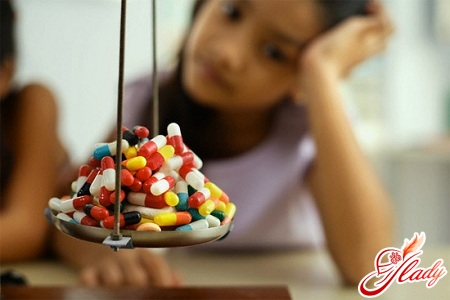
Treatment of allergies in children
So, the enemy has been identified, it's time to beginlarge-scale military actions. Of course, first of all it is necessary to eliminate the source of the allergy - the allergen itself. Or at least reduce the child's contacts with the allergen to the minimum possible. However, this, as a rule, is not enough and cannot be done without treatment.
- Medication
The doctor will prescribe pharmacological treatment for the childdrugs that are optimally suited to him. Today, the new generation of antiallergic drugs is free from the disadvantages of their previous counterparts - they do not make the baby sleepy, and there is no addiction to them. Such drugs are usually produced in the form of sweet syrups, so giving the medicine to the child will not be difficult. In no case should you buy antiallergic drugs for your child yourself, without a doctor's prescription - you can only make the situation worse.
- Homeopathic treatment
Recently, it has become increasingly popularacquires homeopathic treatment for allergies. Those who have tried it claim that the result is very, very effective. However, you will have to wait a very long time for it. And it is not so easy to find specialists who treat children suffering from allergies. The treatment is based on a simple mechanism - with the help of homeopathic preparations, the entire body of a sick child is rebuilt, the immune system's reaction to an allergen changes. Taking the drug begins with very small doses, which are gradually increased. The immune system learns to react correctly to the allergen. To obtain the desired result, it is very important to strictly follow the regimen for taking the drug. Such treatment is especially effective if it is impossible to completely eliminate the allergen - for example, to house dust. One homeopathic course of treatment allows you to rid your child of allergies to 3-4 irritants at once. This treatment should be started in the fall, when the body is least susceptible to all allergens without exception.
Child's lifestyle
Even if you are treatedmanaged to cope with the attacks, we must not forget that allergies can make themselves known at any time. Therefore, the baby's parents must completely change the child's lifestyle. And not only the baby's, but their own too. It is very important to follow a number of the following rules and requirements:
- Compliance with hypoallergenic diet
It doesn't matter what exactly causes the allergy.in children - it is still necessary to follow a hypoallergenic diet. First of all, strictly exclude the following products from the children's diet: chicken, honey, eggs, all types of fish, carbonated drinks, cocoa, chocolate, all products containing artificial colors and flavors. And if the child suffers from food allergies, the list of permitted products is narrowed even more - porridge on water, slimy soups, non-carbonated drinking water, steamed cutlets.
- Apartment where the child lives
If children have allergies, parents shouldmake some changes in the apartment. Firstly, you will have to give up carpets, as they are a source of dust accumulation. Secondly, you need to get rid of soft toys, for the same reason. Wet cleaning should be done at least twice a day. The use of household chemicals is also highly undesirable, replace them with good old soda and laundry soap. Families with pets will have the hardest time. Unfortunately, children can be allergic even to dry fish food. What to do in your particular case is best decided together with an allergist.
- Flowering plants
In case the child suffers from allergiesto plant pollen, parents should remember their flowering schedule. This measure will help prevent an attack of the disease. And it is always easier to do this than to treat pollinosis later. Compliance with all these rules and treatment under the strict supervision of an allergist in most cases allows you to completely overcome allergies in children. Be healthy! We recommend reading:




